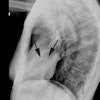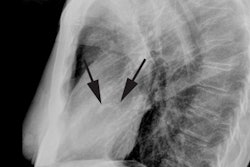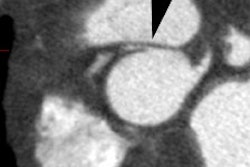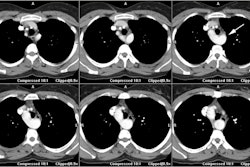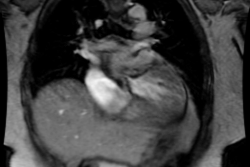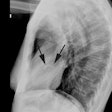AJR Am J Roentgenol 2000 Mar;174(3):803-9
Interscan variation in coronary artery calcium quantification in a large
asymptomatic patient population.
Yoon HC, Goldin JG, Greaser LE 3rd, Sayre J, Fonarow GC.
OBJECTIVE: We evaluated interscan variation in coronary artery calcium scores in
a large screening population as determined by electron beam CT. MATERIALS AND
METHODS: One thousand patients (average age, 53 years; age range, 18-85 years)
who were asymptomatic for coronary artery disease underwent two consecutive
scans of the heart on an electron beam CT scanner. Scans were performed with ECG
gating, breath-hold, 3-mm collimation, and 100-msec exposure. Two contiguous
pixels with density values greater than 130 H were used as the minimum criterion
for a calcific lesion. The calcium score was determined on a vessel-by-vessel
basis for both scans of each patient. Interscan variation in calcium and vessels
involved with calcification was evaluated on the basis of age, sex, and average
calcium score. RESULTS: The percentage of difference between calcium scores in
scans was 28.4% and 43.0% for women and men, respectively. For the individual
epicardial arteries (left main, left anterior descending, circumflex, and right
coronary), the percentage of difference for calcium scores was 20.2-24.2% for
women and 30.5-44.9% for men. A difference between the two scans in at least one
vessel of the total coronary arteries identified with calcium was noted in 31%
of patients. CONCLUSION: Interscan variability in calcium scores may be
important in the determination of risk stratification. Subjects with a nonzero
calcium score may benefit from undergoing two scans at the time of initial
imaging.
